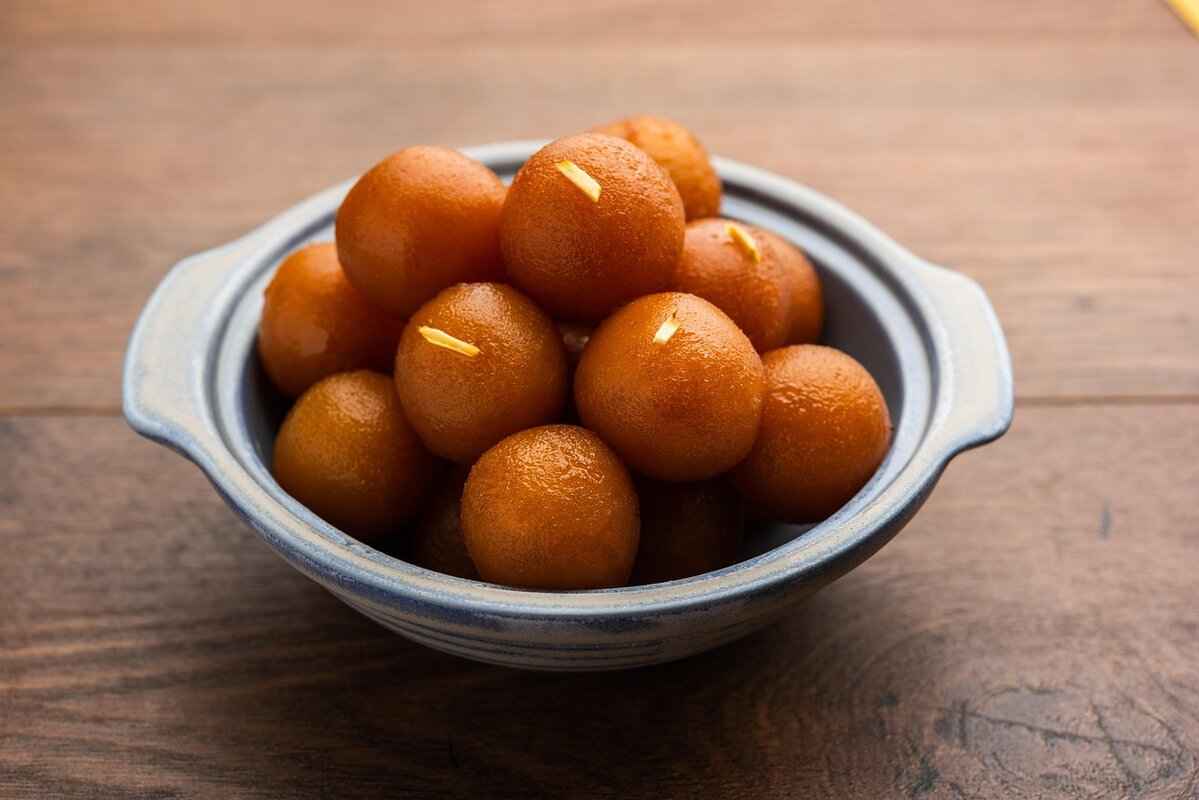This article delves into the delightful world of Bengali sweets, highlighting three iconic desserts: Rasgulla, Sandesh, and Mishti Doi. These treats are not only delicious but also carry deep cultural significance. Join us as we explore their recipes, preparation tips, and the traditions that celebrate them.
The Essence of Bengali Sweets
Bengali sweets are celebrated for their unique flavors and textures. They play a vital role in Bengali culture, often featured in festivals, family gatherings, and special occasions. The artistry involved in making these sweets reflects the rich heritage of Bengal.
What is Rasgulla?
Rasgulla, a cherished Bengali delicacy, is made from chhena (curdled milk). This spongy, syrup-soaked dessert is a must-try for anyone venturing into Bengali cuisine.
Ingredients for Rasgulla
- Milk
- Lemon juice
- Sugar
The quality of these ingredients significantly impacts the final taste, making it essential to choose the best.
Step-by-Step Rasgulla Recipe
1. Boil the milk and curdle it with lemon juice.2. Drain the chhena and knead it until smooth.3. Form small balls and cook them in sugar syrup until they double in size.
Exploring Sandesh
Sandesh is another iconic sweet, known for its rich flavor and artistic presentation. Primarily made from chhena, it can be flavored with various ingredients, making it versatile and delightful.
Variations of Sandesh
- Chocolate Sandesh
- Mango Sandesh
- Saffron Sandesh
Each variation offers a unique taste experience while preserving the essence of traditional Sandesh.
Making Sandesh at Home
Creating Sandesh at home is straightforward. This section provides a simple recipe along with tips for shaping and decorating your sweets to impress your guests.
Understanding Mishti Doi
Mishti Doi, or sweetened yogurt, is a traditional Bengali dessert that combines the richness of yogurt with the sweetness of jaggery. It serves as a perfect ending to any meal.
Ingredients for Mishti Doi
- Full-fat milk
- Jaggery
- Yogurt culture
Using high-quality milk and jaggery is crucial for achieving the desired flavor and texture.
How to Prepare Mishti Doi
1. Boil the milk and let it cool.2. Mix in jaggery until dissolved.3. Add yogurt culture and pour into a clay pot.4. Allow it to set for several hours.
The Cultural Significance of Bengali Sweets
Bengali sweets are more than just desserts; they embody the culture and traditions of Bengal. Integral to festivals, weddings, and family celebrations, they symbolize love, joy, and togetherness.
Tips for Perfecting Bengali Sweets
To achieve the best results, consider these expert tips:
- Select high-quality ingredients.
- Pay attention to cooking times.
- Practice shaping techniques for a professional finish.
Conclusion: Embracing Bengali Sweet Traditions
In conclusion, making authentic Bengali sweets like Rasgulla, Sandesh, and Mishti Doi is a rewarding experience. By embracing these recipes and the culture they represent, you can bring a taste of Bengal into your home and share it with loved ones.

The Essence of Bengali Sweets
Bengali sweets are not just desserts; they are an essential part of the Bengali culture, celebrated for their distinct flavors and textures. These sweets, often associated with festivals, family gatherings, and celebrations, reflect the rich culinary heritage of Bengal. Each sweet has a unique story, often passed down through generations, making them a cherished part of Bengali identity.
During festivals like Durga Puja and Poila Baisakh, Bengali sweets take center stage, symbolizing joy and festivity. The preparation of these sweets is an art form, with families often coming together to create them, reinforcing bonds and traditions. The process of making sweets like Rasgulla, Sandesh, and Mishti Doi is not just about the end product; it’s about the experience of sharing and celebrating together.
Each sweet has its own significance:
- Rasgulla: Known for its spongy texture and syrupy sweetness, it represents the joy of togetherness.
- Sandesh: A delicacy that showcases artistic skills, often made during special occasions to express love.
- Mishti Doi: This sweetened yogurt is a staple at family feasts, symbolizing richness and comfort.
Moreover, the ingredients used in these sweets play a crucial role in their flavor and texture. High-quality milk, fresh chhena, and natural sweeteners like jaggery or sugar are essential for creating the authentic taste that Bengali sweets are known for. The meticulous process of preparation, from curdling milk to shaping the sweets, is what makes them unique.
In conclusion, Bengali sweets are more than just culinary delights; they are a celebration of culture, love, and togetherness. Their presence in festivals and family gatherings highlights their importance in the lives of the Bengali people, making them an integral part of their identity.

What is Rasgulla?
Rasgulla is a quintessential Bengali sweet that has captured the hearts of many across the world. This delightful dessert is primarily made from chhena, which is curdled milk. The process of making Rasgulla is an art form that showcases the culinary heritage of Bengal.
These spongy and syrup-soaked balls are not just a treat for the taste buds but also a feast for the eyes. They are typically served in a sweet syrup made from sugar and water, which enhances their flavor and texture. The soft, fluffy consistency of Rasgulla is achieved through meticulous preparation, making it a must-try for anyone exploring the vast landscape of Bengali cuisine.
Rasgulla is often enjoyed during festivals and special occasions, symbolizing joy and celebration. Its popularity has transcended regional boundaries, making it a beloved dessert in various parts of India and beyond.
| Ingredient | Quantity |
|---|---|
| Milk | 1 liter |
| Lemon Juice | 2-3 tablespoons |
| Sugar | 1 cup |
| Water | 4 cups |
To make authentic Rasgulla, start by boiling the milk and then curdling it with lemon juice. Once the curds separate, strain them and rinse under cold water. Knead the chhena until it becomes smooth, then shape it into small balls. Cook these balls in boiling sugar syrup until they double in size and absorb the sweetness.
In conclusion, Rasgulla is not just a dessert; it is a cultural icon that embodies the essence of Bengali tradition. Whether enjoyed during a festival or as an everyday treat, Rasgulla continues to be a symbol of love and hospitality in Bengali households.
Ingredients for Rasgulla
Creating authentic Rasgulla is a delightful journey into the heart of Bengali sweets. To achieve the best results, it’s essential to use high-quality ingredients that not only enhance the flavor but also contribute to the texture of this beloved dessert.
To make authentic Rasgulla, you will need the following simple yet vital ingredients:
- Full-Fat Milk: The foundation of Rasgulla, full-fat milk is crucial for producing rich and creamy chhena. Always opt for fresh, unprocessed milk for the best results.
- Lemon Juice: This natural acid is used to curdle the milk. Freshly squeezed lemon juice is preferred, as it provides a brighter flavor compared to bottled varieties.
- Sugar: The sweetener that gives Rasgulla its characteristic taste. Using fine sugar ensures it dissolves quickly in the syrup, creating a smooth texture.
- Water: Essential for creating the sugar syrup that the Rasgullas will soak in. The right balance of water and sugar is key to achieving the perfect syrup consistency.
The quality of these ingredients greatly influences the final taste of your Rasgulla. For instance, using organic milk can enhance the overall flavor profile, while fresh lemon juice ensures a delightful tartness that complements the sweetness.
Additionally, consider the temperature of the milk when curdling; it should be hot but not boiling. This step is critical for obtaining the right texture of the chhena, which should be soft and pliable. Kneading the chhena properly after draining the whey is another crucial step, as it helps in forming the Rasgulla balls that are light and fluffy.
In summary, the journey to making authentic Rasgulla starts with selecting the best ingredients. By paying attention to quality and preparation methods, you can create this iconic Bengali sweet that is sure to impress.
Step-by-Step Rasgulla Recipe
Rasgulla, a cherished sweet from Bengal, is known for its soft and fluffy texture that melts in your mouth. This delightful treat is made from chhena, which is curdled milk, and is cooked in a light sugar syrup. Follow this detailed recipe to create the perfect Rasgullas at home.
- Ingredients:
- 1 liter of full-fat milk
- 2-3 tablespoons of lemon juice (or vinegar)
- 1 cup of sugar
- 4 cups of water
- A pinch of cardamom powder (optional)
Instructions:
- Curdle the Milk: In a heavy-bottomed pan, bring the milk to a boil. Once boiling, reduce the heat and gradually add lemon juice, stirring gently until the milk curdles. You should see the whey separating from the curds.
- Strain the Chhena: Pour the curdled milk into a muslin cloth or fine sieve to strain the chhena. Rinse it under cold water to remove any sourness from the lemon juice. Squeeze out excess water and hang it for about 30 minutes.
- Knead the Chhena: Transfer the strained chhena to a clean surface and knead it for about 5-7 minutes until it becomes smooth and forms a dough-like consistency. This step is crucial for achieving soft Rasgullas.
- Shape the Rasgullas: Divide the chhena into small portions and roll them into smooth balls. Ensure there are no cracks on the surface, as this helps them hold their shape during cooking.
- Prepare the Sugar Syrup: In a large pot, combine sugar and water. Bring it to a boil, stirring until the sugar dissolves completely. You can add a pinch of cardamom powder for flavor.
- Cook the Rasgullas: Gently drop the chhena balls into the boiling sugar syrup. Cover the pot and let them cook for about 15-20 minutes. The Rasgullas will expand and become spongy.
- Cool and Serve: Once cooked, remove the pot from heat and let it cool. The Rasgullas will absorb the syrup as they cool down. Serve them chilled or at room temperature.
Enjoy your homemade Rasgullas, a perfect way to indulge in the rich traditions of Bengali sweets!

Exploring Sandesh
Sandesh is a quintessential Bengali sweet that captures the essence of Bengali culinary artistry. This delightful dessert is primarily made from chhena, which is fresh paneer obtained from curdled milk. The beauty of Sandesh lies not only in its rich flavor but also in its artistic presentation, making it a favorite during festivals and celebrations.
Traditionally, Sandesh is shaped into various forms, often resembling flowers or intricate designs, showcasing the skill of the maker. The sweetness can be enhanced with a variety of flavors, such as cardamom, saffron, or even fruit purees, allowing for a diverse range of taste experiences. Each bite offers a unique blend of textures and flavors, making it a beloved choice among sweet lovers.
Variations of Sandesh
- Chocolate Sandesh: A modern twist that incorporates rich chocolate flavor, appealing to younger generations.
- Mango Sandesh: Infused with fresh mango pulp, this variant is especially popular during the mango season.
- Saffron Sandesh: Enhanced with fragrant saffron, this version offers a luxurious taste that is often reserved for special occasions.
Making Sandesh at Home
Creating Sandesh at home can be a fulfilling endeavor. Here’s a simple recipe to get you started:
Ingredients:- 2 cups chhena- 1 cup powdered sugar- 1/2 tsp cardamom powder- Optional: fruit purees or flavoringsInstructions:1. Knead the chhena until smooth.2. Mix in powdered sugar and cardamom powder.3. Shape the mixture into desired forms.4. Chill for a few hours before serving.
With a few tips on shaping and decorating, you can create stunning Sandesh that not only taste heavenly but also look visually appealing. Use molds or your hands to form intricate designs, and consider garnishing with nuts or edible flowers for an added touch.
The Cultural Significance of Sandesh
Sandesh holds a special place in Bengali culture, often served during major festivals like Durga Puja and Poila Baisakh. It symbolizes joy and celebration, making it an integral part of Bengali hospitality.
In conclusion, Sandesh is more than just a sweet treat; it is a representation of Bengali tradition and creativity. Whether enjoyed at a family gathering or crafted at home, Sandesh continues to delight the taste buds and warm the hearts of many.
Variations of Sandesh
are a delightful aspect of Bengali cuisine, showcasing the creativity and culinary skills of sweet makers. This traditional sweet, primarily made from chhena (freshly curdled milk), can be transformed into a myriad of flavors, each offering a distinct taste experience while preserving the essence of Sandesh.
Among the most popular variations, chocolate Sandesh stands out, appealing to modern palates. By incorporating rich cocoa into the chhena mixture, this version provides a delightful blend of sweetness and bitterness, making it a favorite among chocolate lovers. The creamy texture combined with the chocolate flavor creates a unique dessert that is both indulgent and satisfying.
Mango Sandesh is another variation that captures the essence of summer. Infused with fresh mango puree, this version is vibrant and refreshing. The natural sweetness of ripe mangoes enhances the Sandesh, making it a perfect treat for warm days or festive occasions. Its bright yellow color and fruity aroma are sure to entice anyone.
Additionally, saffron Sandesh offers a luxurious twist. Infusing the chhena with fragrant saffron strands not only adds a beautiful golden hue but also imparts a rich, aromatic flavor. This variation is often reserved for special celebrations, symbolizing elegance and festivity.
Other exciting variations include pistachio Sandesh, which incorporates crushed pistachios for a nutty crunch, and rose Sandesh, flavored with rose water for a floral note. Each of these variations highlights the versatility of Sandesh, allowing for personalization and creativity in its preparation.
In summary, the variations of Sandesh, such as chocolate, mango, and saffron, not only honor the traditional roots of this beloved sweet but also cater to contemporary tastes. Each variation provides a unique experience, making Sandesh a cherished treat for all occasions.
Making Sandesh at Home
is a delightful culinary experience that allows you to create this traditional Bengali sweet right in your kitchen. Sandesh is known for its soft texture and rich flavor, making it a favorite among sweet lovers. In this section, we will provide a simple yet effective recipe along with valuable tips for shaping and decorating your Sandesh to impress your family and friends.
To start, here is a straightforward recipe for making Sandesh:
- Ingredients:
- 2 liters of full-fat milk
- 1/4 cup of lemon juice or vinegar
- 1/2 cup of powdered sugar (adjust to taste)
- 1/4 teaspoon of cardamom powder
- Chopped nuts (like pistachios or almonds) for garnish
Step-by-Step Instructions:
- Boil the milk in a heavy-bottomed pan. Once it reaches a boil, add the lemon juice or vinegar gradually while stirring.
- As the milk curdles, turn off the heat and let it sit for a few minutes.
- Strain the curds using a muslin cloth or fine sieve to separate the chhena from the whey.
- Once the chhena is cool, knead it well until it becomes smooth and soft.
- Add powdered sugar and cardamom powder to the chhena, mixing well.
- Shape the mixture into small round balls or flatten them into discs. You can also use molds for decorative shapes.
- Garnish with chopped nuts for an added touch of elegance.
Tips for Shaping and Decorating:
- For a smooth finish, ensure your hands are slightly damp while shaping the Sandesh.
- Experiment with different flavors by adding cocoa powder for chocolate Sandesh or mango puree for a fruity twist.
- Use decorative molds to create visually appealing shapes that can enhance the presentation.
Making Sandesh at home is not only simple but also allows for creativity in both flavor and design. By following this recipe and tips, you can enjoy a taste of Bengal’s rich culinary heritage in the comfort of your home.

Understanding Mishti Doi
Mishti Doi, a cherished Bengali dessert, is more than just sweetened yogurt; it represents a rich cultural heritage and culinary tradition. This delightful treat combines the creamy texture of yogurt with the natural sweetness of jaggery, offering a unique flavor profile that is both indulgent and satisfying. It serves as a perfect conclusion to any meal, leaving a lasting impression on your palate.
To truly appreciate Mishti Doi, it’s essential to understand its ingredients and preparation method. The primary components include:
- Full-fat milk: The foundation of this dessert, providing a rich and creamy base.
- Jaggery: A traditional sweetener that adds depth and a hint of caramel flavor.
- Yogurt culture: This is essential for fermentation, giving Mishti Doi its characteristic tanginess.
Making Mishti Doi is a straightforward yet rewarding process. Here’s a brief overview of how to prepare this delightful dessert:
1. Boil the milk until it reduces to half its volume.2. Add jaggery and stir until it completely dissolves.3. Allow the mixture to cool to a lukewarm temperature.4. Add yogurt culture and mix well.5. Pour the mixture into a clay pot for authentic flavor and let it set in a warm place for 6-8 hours.6. Chill in the refrigerator before serving.
One of the reasons Mishti Doi is so beloved is its cultural significance. It is often served during festivals, family gatherings, and special occasions, symbolizing joy and celebration. The dessert’s creamy texture and sweet flavor make it a favorite among all age groups.
In conclusion, Mishti Doi is not just a dessert; it is a culinary experience that embodies the essence of Bengali culture. By mastering its preparation, you can bring a piece of Bengal into your home, delighting your family and friends with this exquisite treat.
Ingredients for Mishti Doi
Mishti Doi, a traditional Bengali dessert, is cherished for its unique flavor profile and creamy texture. To create this delightful sweetened yogurt, you will need the following key ingredients:
- Full-Fat Milk: The foundation of Mishti Doi, full-fat milk is essential for achieving a rich and creamy consistency. The creaminess enhances the overall taste of the dessert.
- Jaggery: This natural sweetener, made from sugarcane juice, imparts a distinct caramel-like flavor to the Mishti Doi. The quality and freshness of jaggery are vital, as they directly influence the sweetness and taste.
- Yogurt Culture: A small amount of plain yogurt is used as a starter culture to ferment the milk. This culture is responsible for the tangy flavor and creamy texture that characterize authentic Mishti Doi.
When preparing Mishti Doi, it is important to choose high-quality ingredients. The quality of milk will determine the creaminess, while the freshness of jaggery will enhance the sweetness and flavor profile. Always opt for organic or locally sourced ingredients if possible, as they tend to offer superior taste and nutritional benefits.
Once you have gathered these ingredients, you can begin the process of making Mishti Doi, which involves boiling the milk, mixing in the jaggery until dissolved, and then allowing it to cool before adding the yogurt culture. This mixture is then set aside to ferment, ideally in a clay pot, which adds to the traditional flavor.
In conclusion, the ingredients for Mishti Doi are simple yet crucial for creating this beloved Bengali sweet. By focusing on quality and freshness, you can ensure a delicious end product that reflects the rich culinary heritage of Bengal.
How to Prepare Mishti Doi
Mishti Doi, a traditional Bengali dessert, is a delightful combination of sweetened yogurt and the rich flavor of jaggery. This creamy treat is not only a favorite after meals but also a symbol of Bengali culture. Here’s a detailed guide on how to prepare this delectable dessert at home.
Ingredients Needed
- 1 liter of full-fat milk
- 200 grams of jaggery (or sugar, if preferred)
- 2 tablespoons of yogurt culture
- A pinch of cardamom powder (optional, for flavor)
Step-by-Step Preparation Process
- Boil the Milk: Start by pouring the full-fat milk into a heavy-bottomed pan. Bring it to a boil over medium heat, stirring occasionally to prevent it from burning.
- Sweeten the Milk: Once the milk reaches a boil, reduce the heat and add the jaggery. Stir until it completely dissolves. You can also add a pinch of cardamom powder for added flavor.
- Cool the Mixture: Remove the pan from heat and let the milk cool down to a lukewarm temperature. This is crucial, as adding yogurt culture to hot milk will kill the beneficial bacteria.
- Add the Yogurt Culture: Once the milk has cooled, stir in the yogurt culture. Mix it well to ensure even distribution.
- Set in a Clay Pot: Pour the mixture into a clay pot, which enhances the flavor and gives Mishti Doi its authentic taste. Cover the pot with a clean cloth.
- Ferment: Place the pot in a warm environment for 6-8 hours, or until it sets. The fermentation time may vary depending on the ambient temperature.
- Chill and Serve: Once set, refrigerate the Mishti Doi for a couple of hours before serving. Enjoy it chilled, garnished with a sprinkle of cardamom or nuts if desired.
Conclusion
Making Mishti Doi at home is a rewarding experience that captures the essence of Bengali sweetness. With simple ingredients and a straightforward process, you can indulge in this delicious dessert that is perfect for any occasion.

The Cultural Significance of Bengali Sweets
Bengali sweets are more than just delightful confections; they are a reflection of the rich heritage and traditions of Bengal. These sweets are intricately woven into the fabric of Bengali life, often marking significant occasions such as festivals, weddings, and family gatherings. Their presence at these events symbolizes joy and togetherness, making them an essential part of the celebrations.
The variety of Bengali sweets is vast, each with its unique flavor and texture, contributing to the overall culinary landscape of the region. For instance, during Durga Puja, the streets are filled with vendors selling sweets like Rasgulla and Sandesh, while Mishti Doi is a staple at family feasts. These sweets are not merely enjoyed for their taste; they carry stories and emotions, often passed down through generations.
- Rasgulla: Known for its spongy texture, Rasgulla is a favorite among many and is often associated with celebrations.
- Sandesh: This sweet showcases the artistry of Bengali cuisine, often shaped into beautiful forms and flavored with various ingredients.
- Mishti Doi: The creamy, sweetened yogurt is a traditional dessert that represents the essence of Bengali hospitality.
Each of these sweets plays a vital role in cultural practices. For example, during weddings, sweets are exchanged as tokens of goodwill, while during festivals, they are offered to deities as a sign of gratitude. This deep-rooted connection between sweets and cultural practices highlights their significance beyond mere indulgence.
In conclusion, Bengali sweets are a testament to the region’s rich culture and traditions. They embody the spirit of celebration and community, making them an integral part of every Bengali’s life. By understanding their cultural significance, one can truly appreciate the joy and love that these sweets represent.

Tips for Perfecting Bengali Sweets
To create the most delightful Bengali sweets, it is essential to follow a few expert tips that can significantly enhance your sweet-making experience. Whether you are a novice or an experienced cook, these insights will help you achieve the perfect texture and flavor in your desserts.
- Choose Quality Ingredients: The foundation of any great sweet lies in its ingredients. Always opt for fresh milk for making chhena, and use high-quality jaggery or sugar for sweetness. The better the ingredients, the more delicious your sweets will be.
- Master the Art of Chhena: For sweets like Rasgulla and Sandesh, the chhena must be kneaded to a smooth consistency. This step is crucial, as it determines the softness of the final product. Knead until it is smooth and pliable.
- Perfect Cooking Techniques: Pay attention to cooking times and temperatures. For instance, Rasgullas should be cooked in boiling syrup for the right amount of time to ensure they absorb the syrup without falling apart. Use a thermometer to monitor sugar syrup consistency.
- Experiment with Flavors: Don’t hesitate to add unique flavors to your sweets. Ingredients like cardamom, saffron, or even fruit purees can elevate the taste of your Sandesh and Mishti Doi, making them stand out.
- Presentation Matters: Bengali sweets are often as much about the visual appeal as they are about taste. Take time to shape and decorate your sweets artistically. A well-presented dish can enhance the overall experience.
- Practice Patience: Making sweets can be a meticulous process. Allow yourself the time to perfect each step and don’t rush through. Patience is key to achieving that authentic taste and texture.
By following these expert tips, you can elevate your skills and create mouth-watering Bengali sweets that are sure to impress family and friends. Happy cooking!

Conclusion: Embracing Bengali Sweet Traditions
In the delightful journey of cooking, making authentic Bengali sweets such as Rasgulla, Sandesh, and Mishti Doi offers not just a culinary challenge, but a chance to connect with the rich cultural heritage of Bengal. These sweets are more than just desserts; they are a celebration of tradition, family, and festivity.
The process of creating these delicacies in your own kitchen is immensely rewarding. Each recipe tells a story, and as you follow the steps, you become a part of that narrative. Rasgulla, with its spongy texture, is a testament to the art of chhena-making. Sandesh, on the other hand, showcases the creativity inherent in Bengali sweets, allowing for various flavors and artistic presentations. Mishti Doi, with its creamy consistency and sweet, caramelized taste, serves as a reminder of the region’s love for dairy-based desserts.
Embracing these recipes means embracing the culture they represent. Each sweet is often linked to celebrations, from weddings to festivals, symbolizing joy and togetherness. By preparing these sweets, you not only indulge in their deliciousness but also keep the traditions alive within your household.
Moreover, sharing these sweets with family and friends fosters a sense of community and connection, making every occasion special. So, gather your ingredients, roll up your sleeves, and dive into the world of Bengali sweets. Not only will you enjoy the fruits of your labor, but you will also bring a piece of Bengal into your home, enriching your culinary repertoire and your cultural appreciation.
In conclusion, the experience of making these authentic Bengali sweets is a journey worth taking. It invites you to explore, create, and celebrate the flavors of Bengal, allowing you to share its sweetness with those you love.
Frequently Asked Questions
- What is the main ingredient in Rasgulla?
The primary ingredient in Rasgulla is chhena, which is made from curdled milk. This gives Rasgulla its unique spongy texture.
- Can I use any type of milk for Mishti Doi?
While you can use different types of milk, full-fat milk is recommended for Mishti Doi. It enhances the creaminess and richness of the dessert.
- How long does it take to prepare Sandesh?
Making Sandesh can take around 30 to 45 minutes, depending on the flavor variations and your preparation speed. It’s a quick and delightful treat!
- Are Bengali sweets suitable for vegans?
Most traditional Bengali sweets, like Rasgulla and Sandesh, are made with dairy products, so they are not vegan. However, you can explore vegan alternatives using plant-based ingredients.
- What is the best way to store Bengali sweets?
Bengali sweets can be stored in an airtight container in the refrigerator. They usually stay fresh for a few days, but it’s best to consume them quickly for optimal taste.














